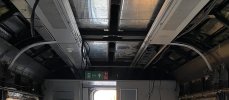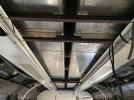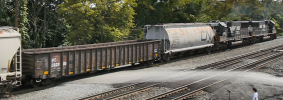Egg Centric
Member
There's probably already a thread explaining this but I'm not sure what to search for. By "lines" I mean the parallel metal grooves on the roofs of these coaches and some derivived units. As well as clearly other trains - I'm in an Azuma (which I'm reasonably sure doesn't have the lines) in platform 4 at Doncaster typing this thread and noticed the Adelante pulling into platform 3 does have them, despite not being derived from those coaches.
I can think of a few theories:
I can think of a few theories:
- Styling
- Aerodynamics - either lateral stability or something very clever
- Space for wiring / air conditioning



